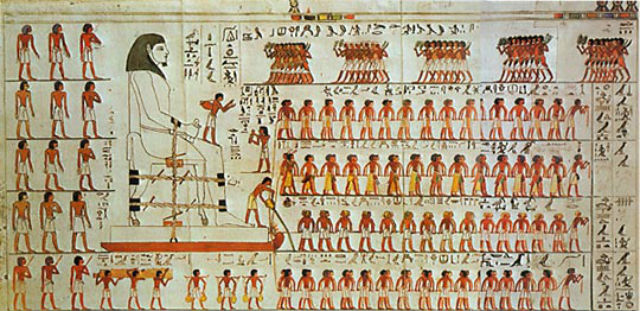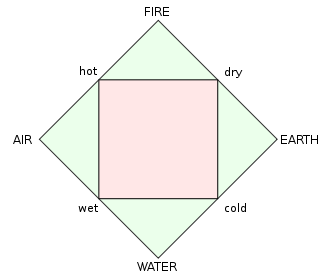Announcements
Welcome to Charms 401!
Please read the following FAQs before joining the class:
When will my assignment be graded?
Charms receives a high volume of assignments submitted each day, and our team is composed entirely of volunteers with real-world obligations. We will not prioritize your assignment over anyone elses. I ask that you be understanding and patient.
If you look in your gradebook, you will be able to see where your assignment is in the grading queue. If you notice that your assignment has not moved at all in the queue after a week, then you may message Professor Laurel to look into the issue.
What do I do if I have a question about an assignment?
Please feel free to reach out to any of our PAs with your questions! Just remember: 1. PAs will never give you the answer to a question. They are here to assist you in completing your work; not to do your work for you. 2. If you have any questions or need help, it is always best to ask before you submit your assignment! Keep in mind: Blank answers are an automatic zero; it is better to always try your best!
If you have a question about an assignment that has already been submitted, please send a private owl directly to Professor Laurel along with your Grade ID for the assignment (this can be found in your gradebook).
If you have any other questions or comments, please do not hesitate to reach out to Professor Laurel!
Lesson 5) Preventive Charms
This is it! Today is the last you’re going to hear about counter-charms in the formal sense in our discussion of preventive counter-charms. Of course, they’ll keep cropping up throughout the rest of your studies this year and in future years, so don’t think you can forget everything you’ve learned.
Today’s class will cover a brief history of counter-charming (including a short extra credit essay opportunity!), and then move into a discussion of preventive counter-charms. Study up, because your two-part midterm examination will be administered as part of this week’s material!
History of the Counter-Charm
In the first lesson of this year, I mentioned that Professor Victoria Heap is responsible for the categorization of counter-charms as we know them. Today I hope to (briefly) shed some light on why her work was revolutionary and worthy of the emphasis I’ve given it these past few lessons.
Note that much of this history is summarized from Heap’s own work, so you may find that it is more Eurocentric than you might like. I have attempted to include some history from other regions where possible.
The history of counter-charming is relatively challenging to study before the creation of written language, due to the difficulty of expressing the concept of counter-charming in art. Showing a spell being cast isn’t particularly difficult, but a second spell undoing the first might look like the ordinary state of affairs. Moreover, it is far more interesting to show a spell being cast than a spell negated in artwork. Enlarging an animal to abnormal size, for example, is the miracle; shrinking it back down to ordinary size seems relatively unimportant.
Even after development of language, counter-charms were largely limited to infrequent use of inverse charms in large-scale construction projects. The use of Weight-Reduction Charms and occasional Shrinking Charms helped facilitate the transport and lifting of particularly weighty blocks during pyramid building in Ancient Egypt, which were later reset to be positioned properly using the Weight-Induction and Engorgement Charms. It is likely that all four charms had been discovered before the first pyramid was constructed, while the Egyptian ingenuity was to put the charms together in inverse pairs to facilitate larger construction projects.

The next ingenuity came in counter-effective charms and happened independently in many regions around the world, including India, Tibet, China, and Japan (though Heap attributes it to the Greeks and Aristotle in particular). While not known as counter-effective charms at the time, the movement toward understanding the world in four elements (fire, water, air, and earth) was, to a large degree, the start of the counter-effective revolution. It had always been apparent that a water charm could be used to put out fire and earth to displace air, but organizing the elements into a diagram with elements across from one another allowed Classical thinkers to consider in a deliberate way what might happen if spells with various elemental properties were to interact in opposing manners. The Fire Charm can be extinguished with a Water Charm, an Air Charm blocked with an Earthen Displacement Charm.

The organization of counter-effective charms into substantive charms (also known as elemental charms) limited the development of counter-charms as a whole, though, since the prominent schools of magic at this time taught that counteracting a spell required the use of spells in opposing elements rather than any kind of ordinary inverse or counter-effective charm. It was considered very roundabout and ineffective, for example, to put out a small fire created with the Fire-Making Charm by using an Oxygen-Repelling Charm (which you learned in Herbology) or by conjuring a small blanket on top of it. Instead, a wizard was expected to cast the Water Charm and put out the fire that way. The Egyptian advances in inverse charms were largely forgotten until Heap rediscovered them on one of her trips to the region.
The next major developments in counter-charming came, interestingly enough, with the onset of castle warfare in Europe. New charms developed to help create, destroy, and restore castle walls were of particular importance in those battles. One of the earliest noted uses of the Effect-Canceling Charm is in a record of the 1216 Siege of Dover (in England), where the spell was needed to cancel the Flight Charms used by the attackers to hurl large rocks at the castle walls. Some counter-effective charms were developed over the next few dozen years to help prevent the rocks from hitting castle walls when even negation charms weren’t sufficient.
Research into counter-charms proceeded in similar situation-specific instances after 1216, when magical crises demanded a counter-charm solution of some sort. There was no order or reasoning behind these magical fixes other than that they needed to happen urgently, but they nevertheless significantly expanded our knowledge of counter-charms.
Professor Heap’s brilliance came in 1908 with her development of the Five Categories of Counter-Charms. Her categories transformed research into counter-charming from an assorted jumble of spells into systematic, organized structure. This critical development allows counter-charms to be researched with unprecedented deliberation, and makes their study far more accessible to the ordinary wizard.
Preventive Counter-Charms
Sometimes it is an easy matter to undo a spell that has been cast and restore an object to its original state; at other times, it may be far more difficult. If you act sooner rather than later, however, you have more options open to you. This is where the idea of “preventive counter-charms” comes into play. The goal of a preventive counter-charm is to prevent a spell from taking effect on a given object, or to stop a spell before it has been cast so it will return the object to its original state, partially or completely. The key difference between preventive counter-charms and ordinary counter-charms is in casting the counter-charm before the other charm is cast.
The Sticking Charm and the Locomotion Charm are two spells that prevent each other very well. If an object has been stuck to the ground, it cannot be lifted with the Locomotion Charm. Likewise, an object that has been lifted off the ground with the Locomotion Charm cannot then be stuck down with a Sticking Charm, as the two surfaces must be touching. The two are thus prime examples of preventive charms, since they only work preventively.
Preventive charms also figure prominently in the relationship between the Warming Charm and the Chilling Charm. If you wish to stop an object from being chilled, you need only warm it up beforehand. When the object is chilled, it will revert back to its normal temperature.
The following charms are partial-inverses to one another, and can be used preventively or not.
Sharpening Charm
Incantation: Inspico (in-SPIK-oh)
Wand Movement: Jagged flicks diagonally right and down then diagonally left and down. It should look like an arrowhead, just like this: “>.”
Willpower: Medium.
Concentration: Medium; Keep your mind on the target edge(s). Visualize the edge(s) in question as a sharpened point.
Category: Static.
The Sharpening Charm can be used to make a rounded or dull edge into a sharp edge. It can also be used to further hone an object that is already sharp. This spell should be used with caution, as it can last a few hours and might harm unsuspecting passers-by who come in contact with the target edge. A backfire of this spell may give you a small, skin-deep cut.
Smoothing Charm
Incantation: Glisseo (glis-EH-oh)
Wand Movement: Smooth strokes up and down twice with the wand.
Willpower: Medium.
Concentration: Medium; Keep your mind on the target edge(s). Visualize the edge(s) as smoothed over.
Category: Static.
The Smoothing Charm can be used to smooth over or dull a sharpened edge. With sufficient visualization and willpower, it can be used to eliminate an edge entirely, flattening what was once a corner. This spell is more effective on sharper edges, though it is more difficult to get such edges to flatten completely.

If this spell is used to flatten an edge entirely, the Sharpening Charm will not be able to undo it. Consider, for example, casting this charm on a staircase (which requires high levels of willpower and concentration you do not yet possess): if you flatten an entire flight of steps so that it becomes a smooth ramp, there are no edges left for you to re-sharpen. However, ordinary use of the Smoothing Charm and the Sharpening Charm will have them working as inverse charms, each able to undo or prevent the other.
Assignments
You have your midterm to do! Huzzah! You will have both a test and an essay to complete for for midterm. The Lesson Five Worksheet is also required.
Image credit: Gawker, Wikipedia, Buzzfeed
- CHRM-301
Enroll
-
Lesson Five Worksheet
Assignment -
Year Four Midterm Test
Test -
Year Four Midterm Essay
Essay
-
Martha Desurra
Professor's Assistant


